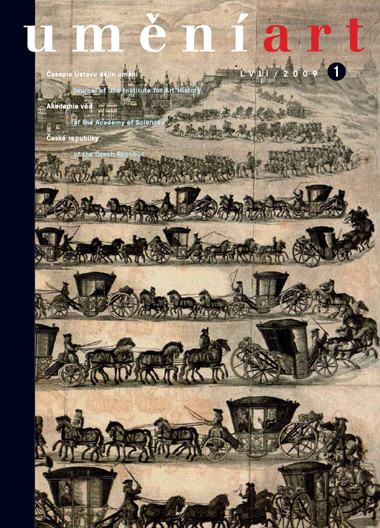Zuzana Všetečková
Nástěnné malby v kostele sv. Jana Křtitele v Jindřichově Hradci do konce vlády Lucemburků
In the Presbytery of the Church of St John the Baptist in Jindřichův Hradec there is a painting of the Passion Cycle on the north wall, dating from around 1330, which was probably created in connection with the arrival of the Minorites in Jindřichův Hradec, and the large composition of the Man of Sorrows was probably painted in connection with Arma Christi and the donators. We linked this painting to Jindřich II of Hradec and to Zdeněk of Šternberk, whose coat-of-arms can be seen in front of the kneeling donator. A line of saints is painted on the opposite wall, with Saint Wenceslaus, Saint Adalbert, and recently identified Saint Erasmus - bishop and the patron saint of weavers. To his right the artist painted a scene from the Legend of Saint Dorothy, in which Jesus is seen bringing Theophilus a basket of flowers - the attribute of a saint. The nobility of Hradec venerated Saint Dorothy as their patron saint, and their coat-of-arms contains the cinquefoil. We assume that the painting was made in the third to fourth decades of the 14th century. We know from an inscription that in a chamber in the palace in Hradec there was a painting of the narrative legend of Saint George that had been commissioned by Oldřich III of Hradec and by Herman, a representative of the Teutonic Knights. The monumental figures of twelve apostles along the windows and of the angel announcing Christ's birth to Mary have been dated as originating in the 1360s. Particularly interesting is the Italian architecture framing the figures of the apostles, a close stylistic analogy for which can be found in uncovered paintings in 1983 the church in Spital bei Weitra (Low Austria). We interpreted the isolated scenes of Christ on the Mount of Olives and the Enthroned Madonna on a pillar in the church and the unique Plague Painting with the Virgin Mary the Protector in the cloister. We believe that these three compositions could be the work of painters who were working in the monastery in the 1430s. Robert Šimůnek worked on the symbol of the lords of Myšlín and Prostiboř (coast-of-arms) and on the commemorative inscriptions in the church interior.
Full-text in the Digital Library of the Czech Academy of Sciences:
https://kramerius.lib.cas.cz/uuid/uuid:423d403e-5cb5-b231-ce64-904c7be3bcc7
< back

